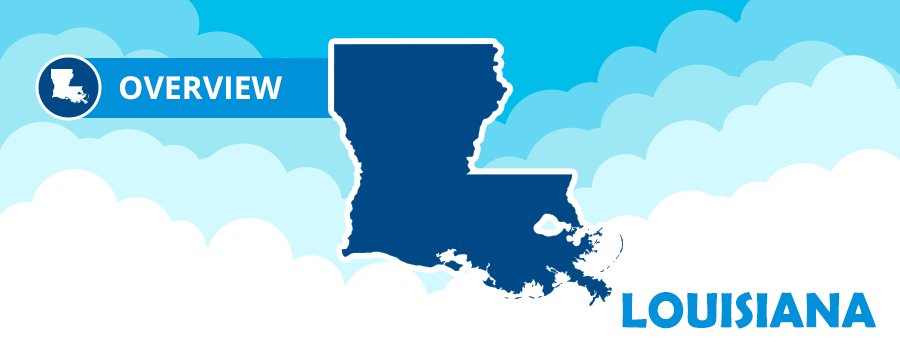Homeschooling in Louisiana
Louisiana families have two options for legally homeschooling in the state:
- Register for approval as a home study program with the LA Board of Secondary and Elementary Education
- Register as a non-public school which is not seeking state approval
These two methods have vastly different expectations and regulations, so it’s important to do thorough research on each of them before deciding which one to choose. In addition, you’ll need to know how to homeschool in Louisiana and what is the best Louisiana homeschool curriculum. It’s time to begin feeling confident about your decision to home educate in the Bayou State!
- How to Start Homeschooling in Louisiana
- Louisiana Homeschooling Laws
- Louisiana Homeschool Associations
- Louisiana Homeschool Groups and Co-ops
- Homeschool Field Trips in Louisiana
- Louisiana Standardized Testing and Test Prep
- Why Time4Learning is the Leading Homeschool Curriculum in Louisiana
- How to Build the Best Homeschool Curriculum for PreK-12 in Louisiana
This information should by no means be interpreted as legal advice. It is your responsibility to interpret and understand the laws that you will be homeschooling under.
How to Start Homeschooling in Louisiana
Once you have made your choice about the method you want to homeschool with, your next steps to homeschooling in Louisiana are:
- Register your homeschool choice by mail or online
- Research the requirements and recordkeeping needed for your chosen option
- Choose your curriculum
- Start having fun learning together!
Welcome to Homeschooling Guide
Download this FREE resource where experienced homeschoolers share their stories for how to begin homeschooling, understanding your child academically, planning your days, and much more.
Louisiana Homeschooling Laws
Compulsory attendance for students in Louisiana is from age 7 to age 18 (or until graduation). Families who choose homeschooling as a way of fulfilling attendance have two distinct options:
- an approved home-study program
- by registering as a non-public school
Each home education option in LA has particular regulations associated with it, which you can explore on our Louisiana Homeschooling Laws page.
Louisiana Homeschool Associations
State homeschool associations usually have a few primary goals:
- Keeping homeschoolers in the state educated about changes (and potential changes) to homeschool law
- Supporting the rights of all families to home educate as they see fit
- Providing resources that will enhance each family’s ability to homeschool
Discover how Louisiana’s state organization meets these goals and the specifics of their mission on the Louisiana Homeschool Associations page.
Louisiana Homeschool Groups and Co-ops
Louisiana homeschoolers have an array of ways to connect. To learn about established groups for homeschoolers, including cooperatives (co-ops) for collaborative educational experiences, visit the Louisiana Homeschool Groups and Co-ops page.
Louisiana Homeschool Field Trips
Were you under the impression that homeschoolers had to learn at home? Find out how many opportunities your students have for hands-on, experiential education all around the state of Louisiana by visiting our Homeschool Field Trips in Louisiana post. Please make sure to contact each site before you plan your visit, as COVID-19 may have impacted their hours of operations.
Louisiana State Test Prep
Families who are homeschooling have the option to use standardized tests to meet their yearly verification requirements. These tests provide parents with a benchmark of year-to-year progress on concepts and understanding. Time4Learning standards-based curriculum helps parents cover the bases that prepare students for standardized testing, and some grades even provide practice assessments to help reduce testing anxiety. Learn more in our Louisiana test prep page.
Why Time4Learning is the Leading Homeschool Curriculum in Louisiana
After deciding which option to homeschool under in Louisiana, the next significant choice you’ll need to make will be the mix of curriculum and resources you’ll use to best meet your student’s individual needs. Time4Learning has been an increasingly popular pick among homeschoolers in the state. Here are just some of the reasons Louisiana homeschoolers trust Time4Learning as part of a well-rounded educational program:
- Time4Learning includes an automated reporting system which tracks test and lesson scores, time spent on each activity (for attendance), completed lesson summaries and more.
- The program is self-paced, which means each student has access to individualized learning paths that ensure skill mastery.
- Concepts are presented using humor, animated lessons, instructional videos, printable worksheets and fun assessments.
How to Build the Best Homeschool Curriculum for PreK-12
Parents have many more home school programs in Louisiana to choose from than typical textbooks, workbooks, and other traditional schooling methods. Online courses, interactive videos, personal computers, laptops, and tablet devices provide exciting and engaging materials for children to experience.
But all of these new methods often confuse parents, especially those who are new homeschoolers. Eventually, parents come to realize that mixing different tools and activities usually keeps their children stimulated and eager to learn. For more information review How to Build the Best Homeschool Curriculum for PreK-12.
Louisiana Unit Study Supplement
Help your homeschooler learn interesting history and geography facts about Louisiana in the Time4Learning unit study supplement.
Online Curriculum for Homeschool, Afterschool and Summer Use
In addition to being an award-winning choice for homeschool families, Time4Learning also offers an online after school program to help build your child’s skills. View our lesson demos to discover why thousands of Louisiana families are already using it!
Give your student the chance to get back on track or explore exciting electives and get ahead for the next school year with Time4Learning’s online summer school. Our educational materials will engage and challenge your child to succeed.








